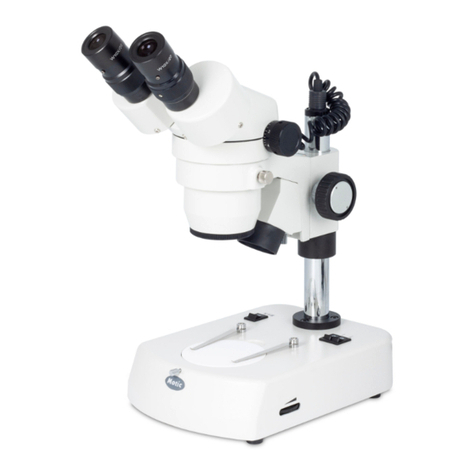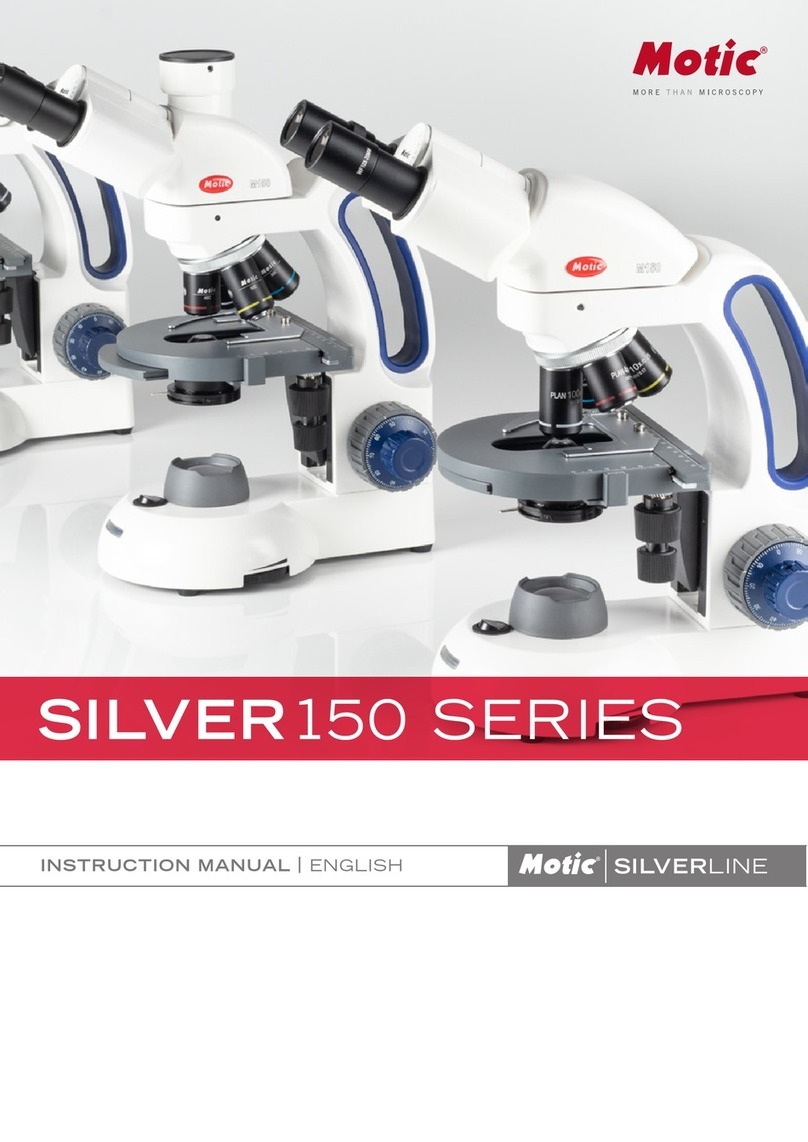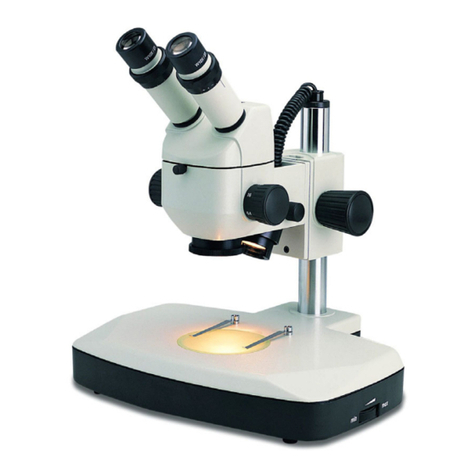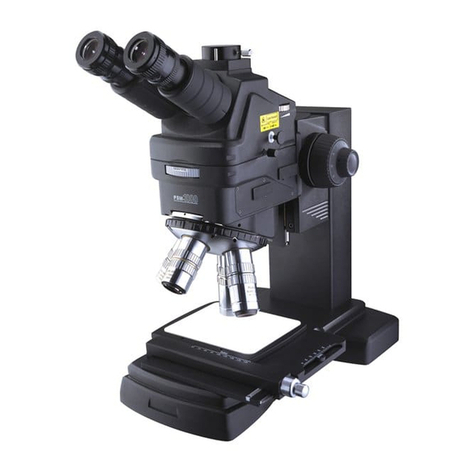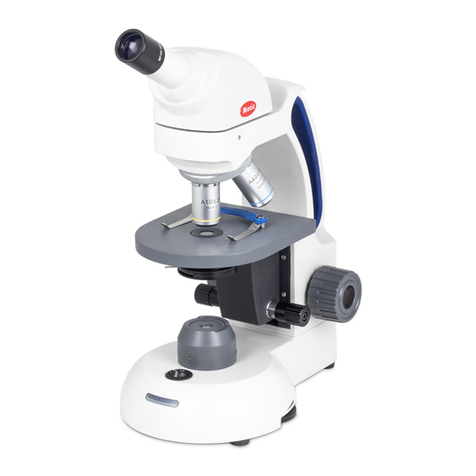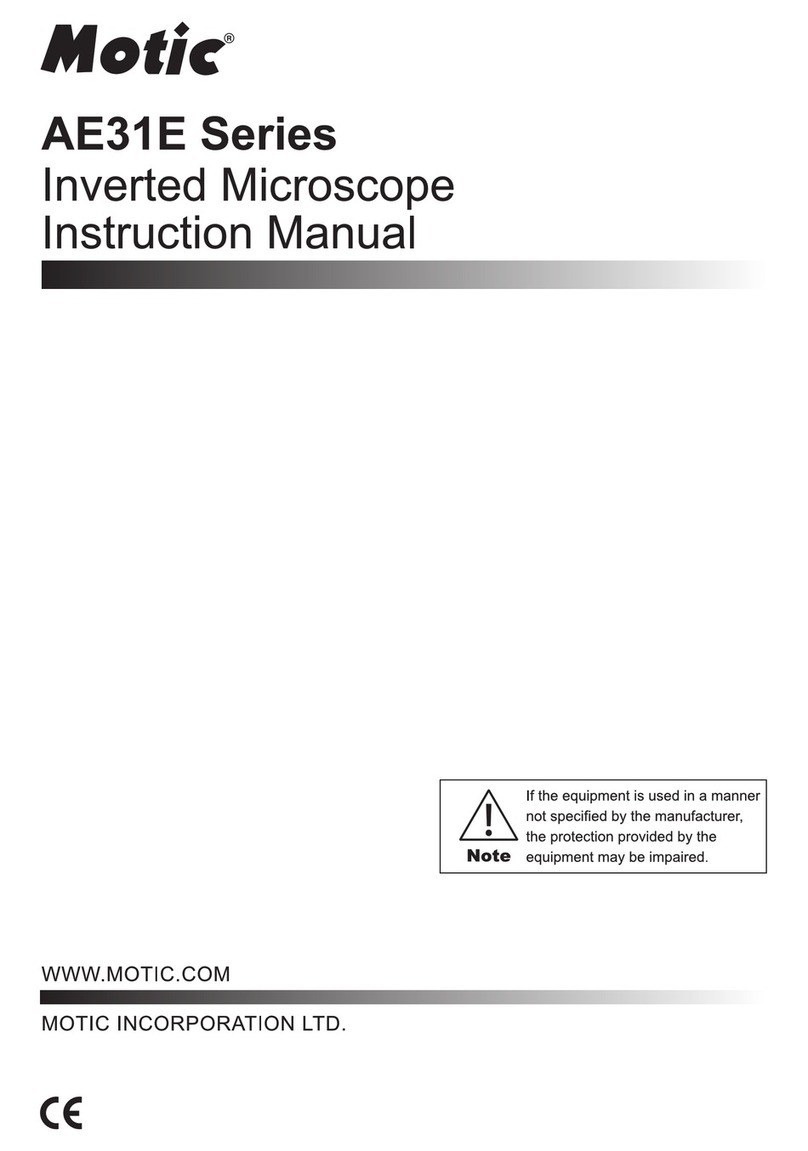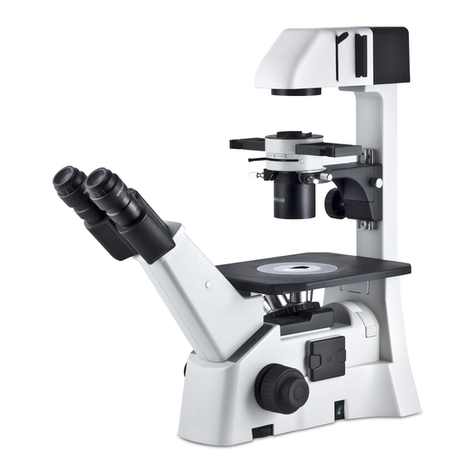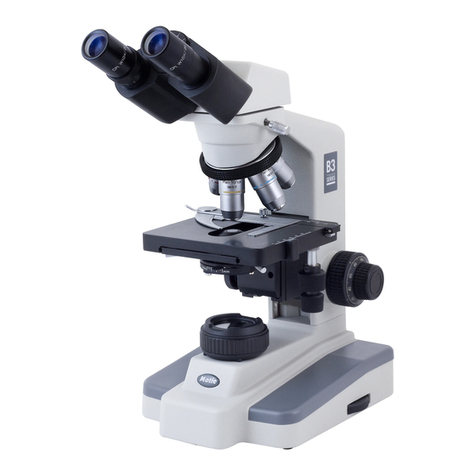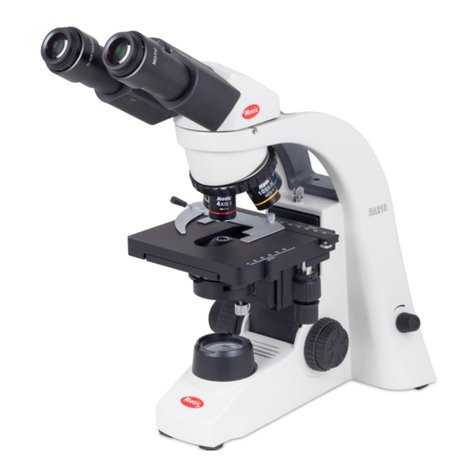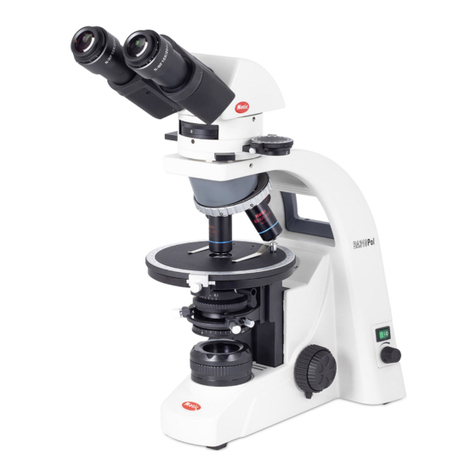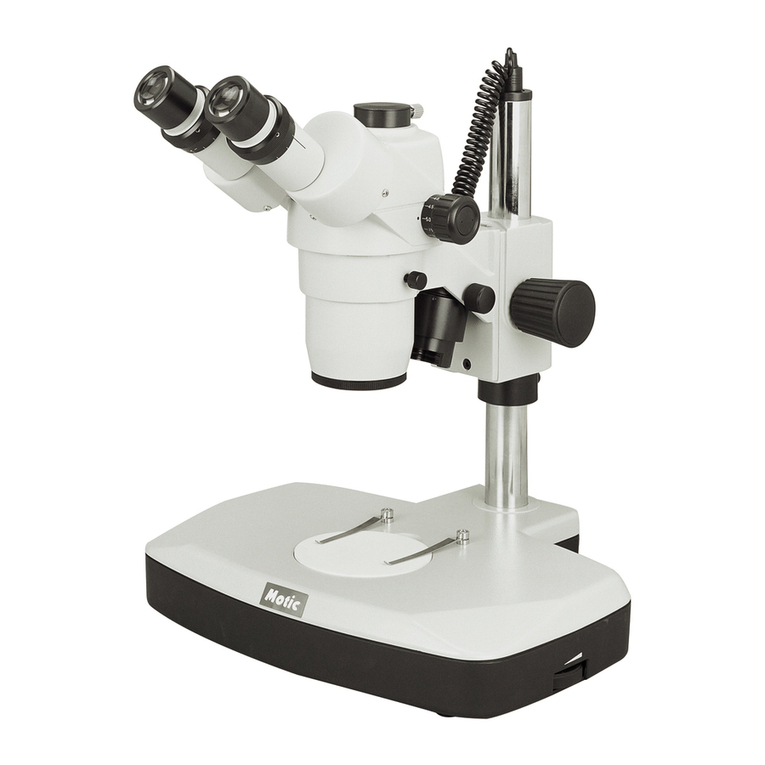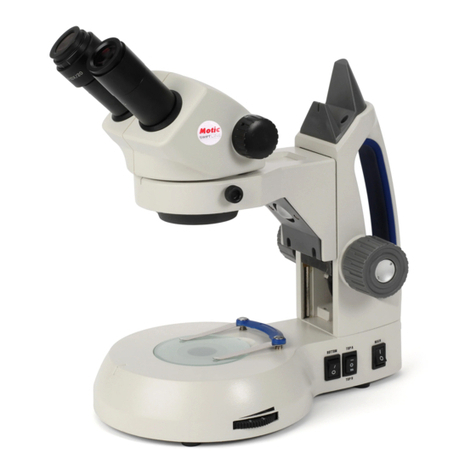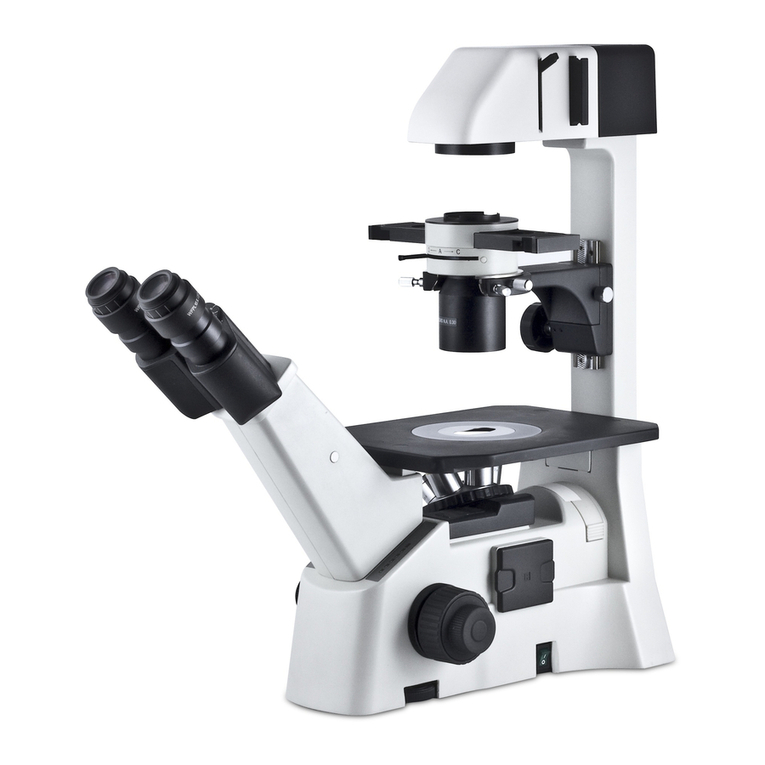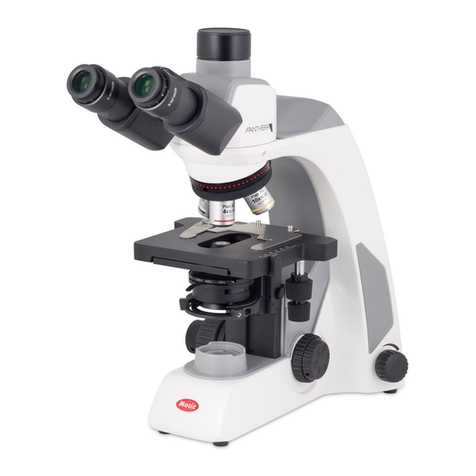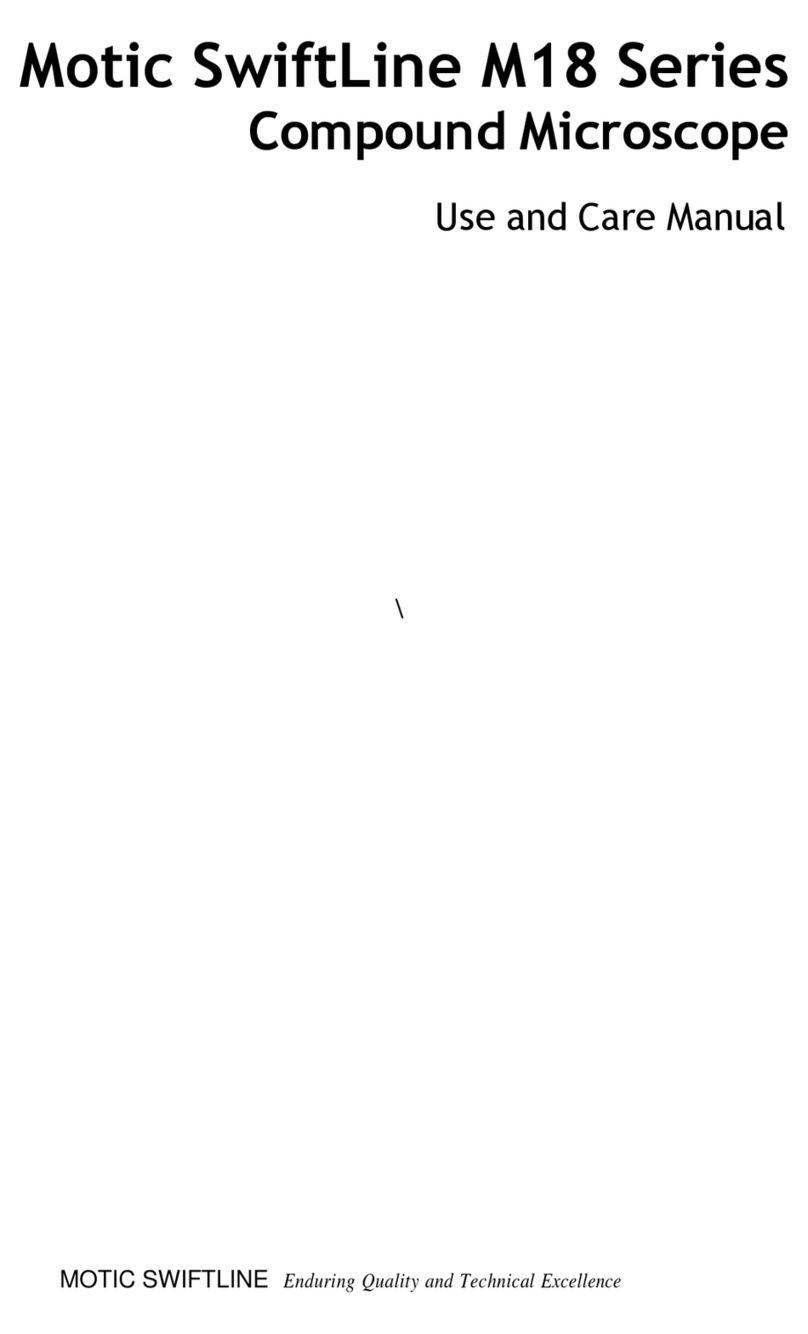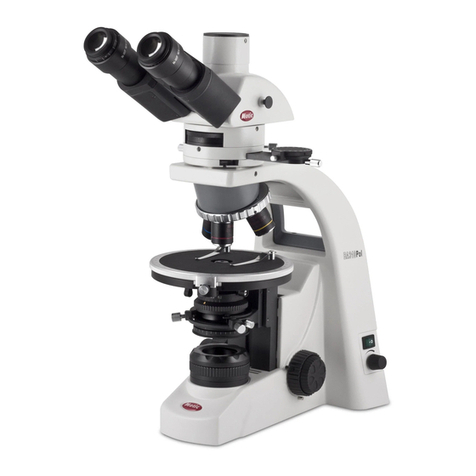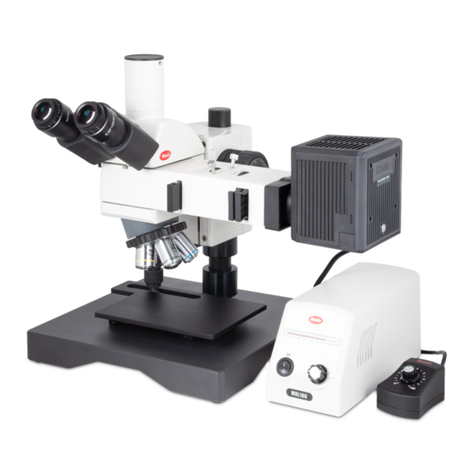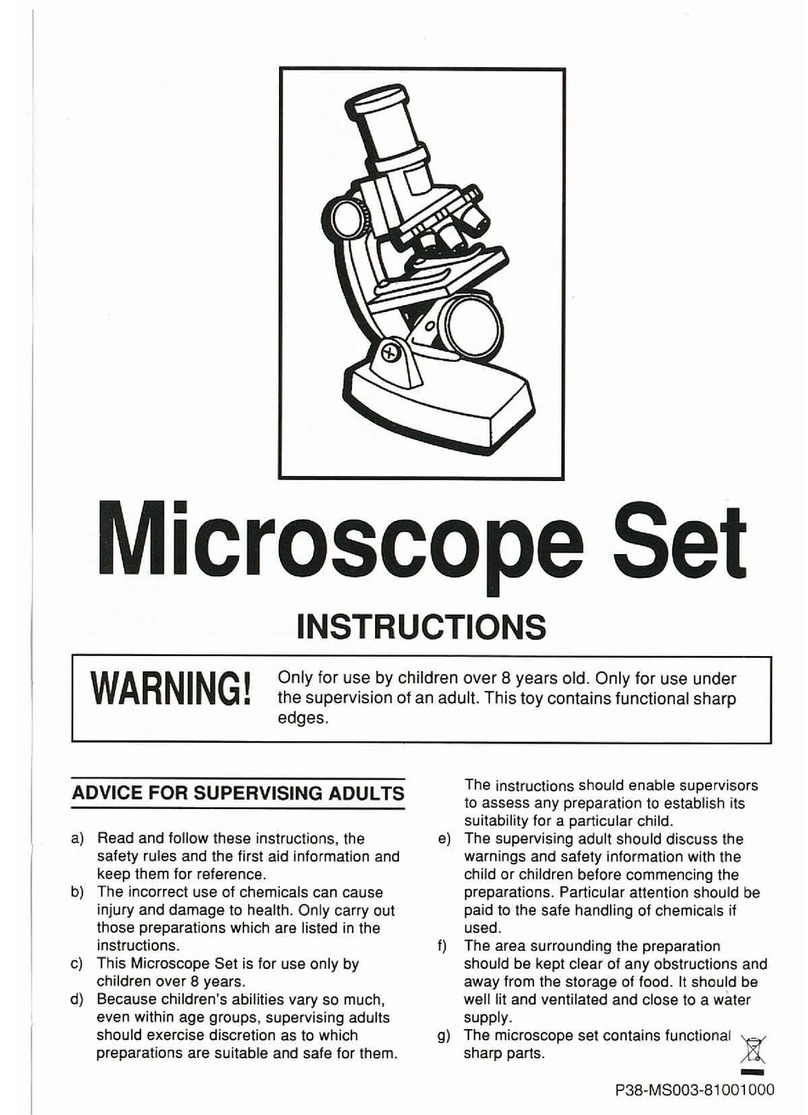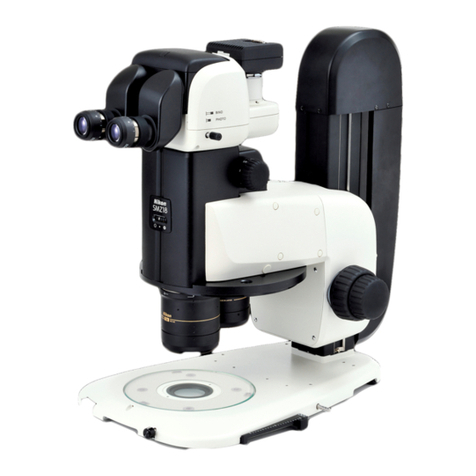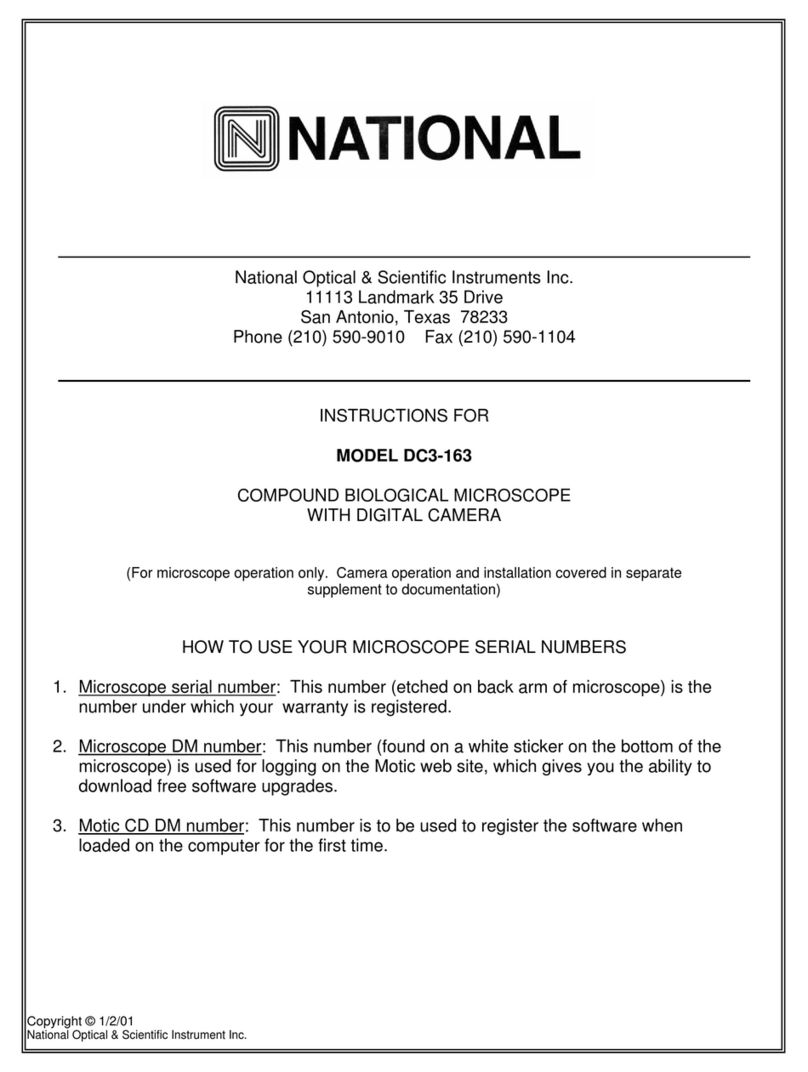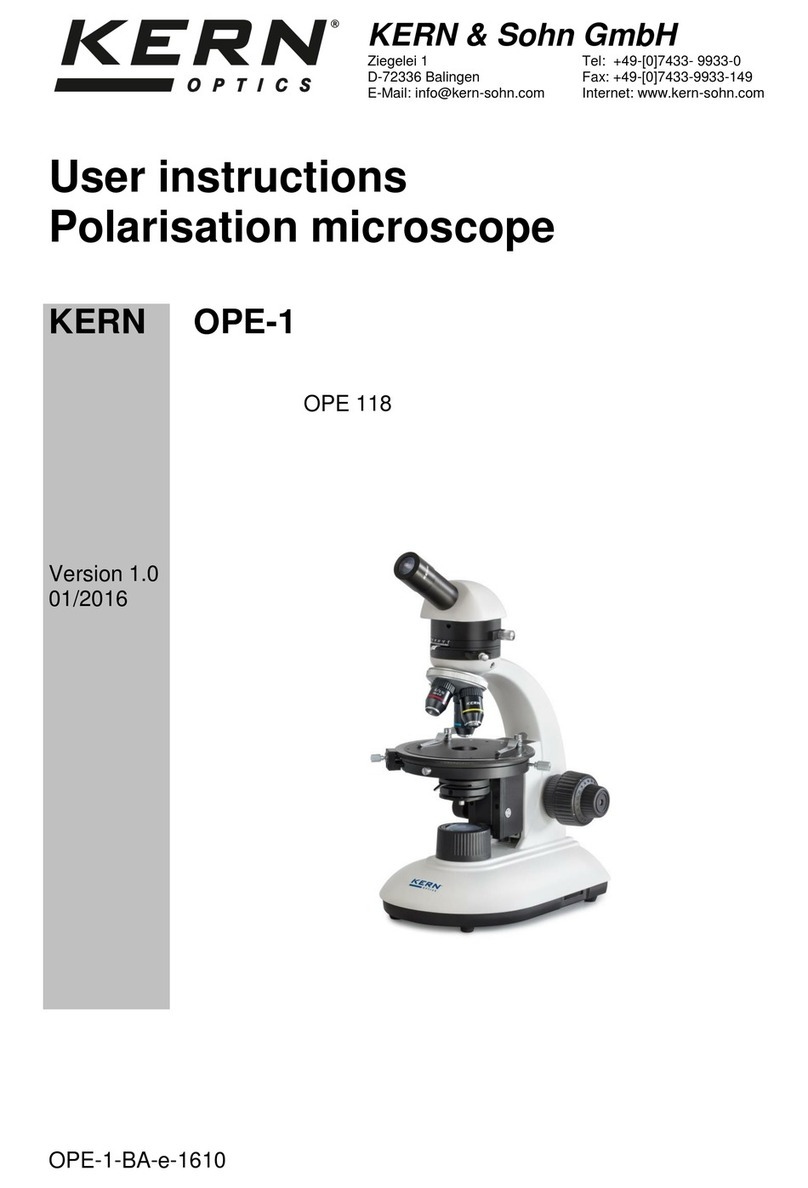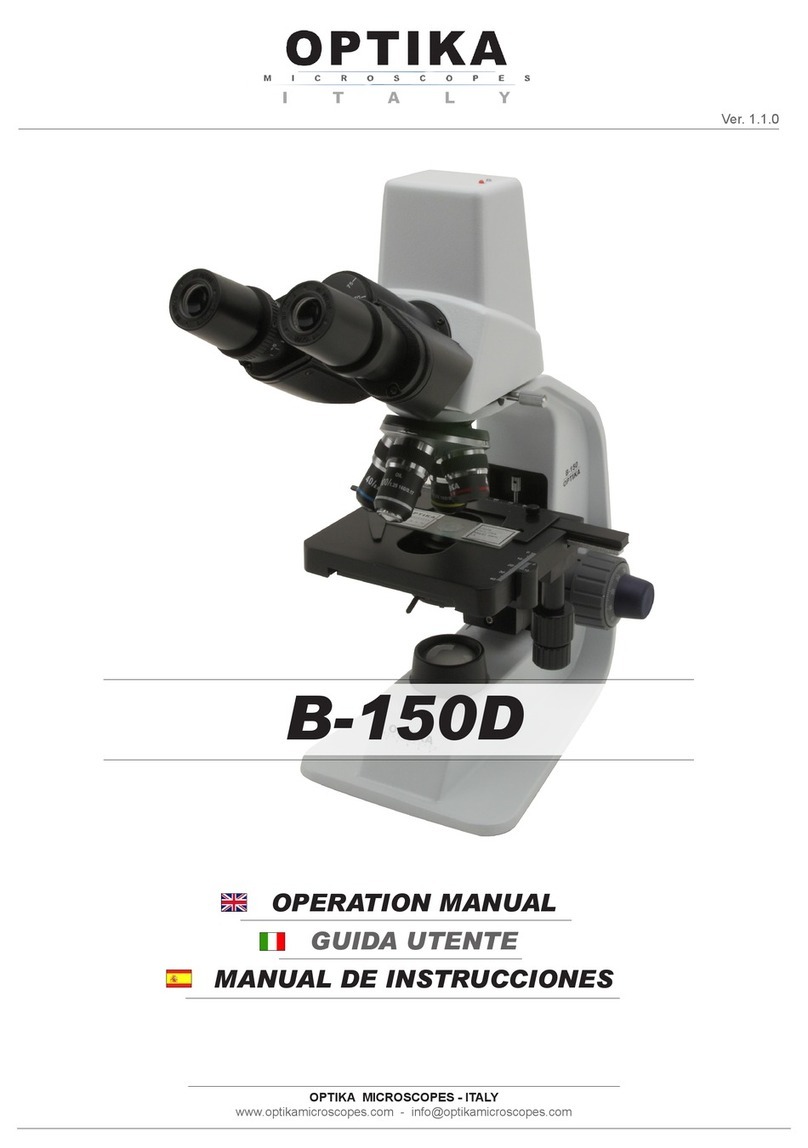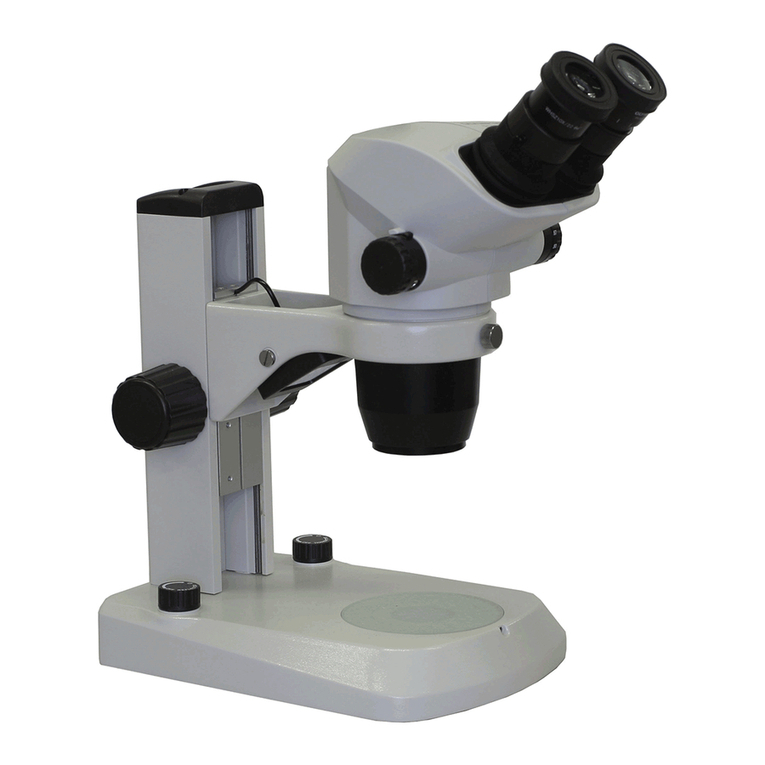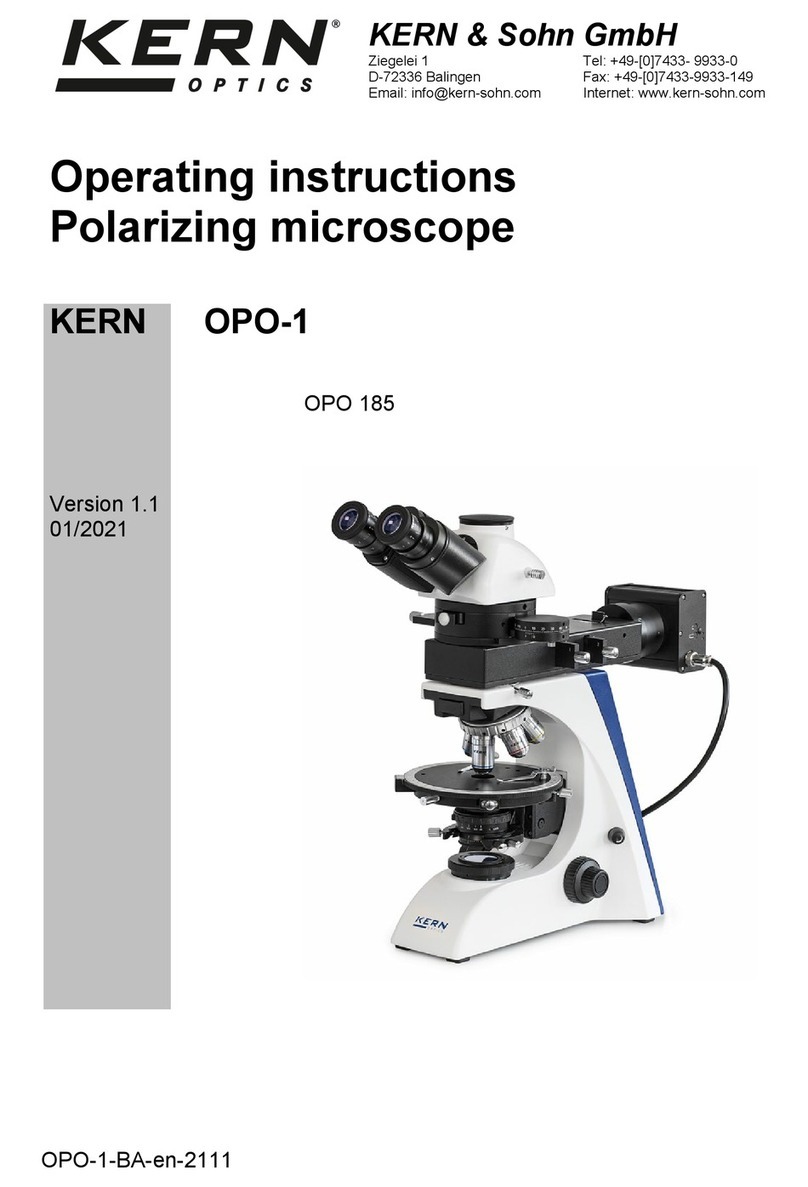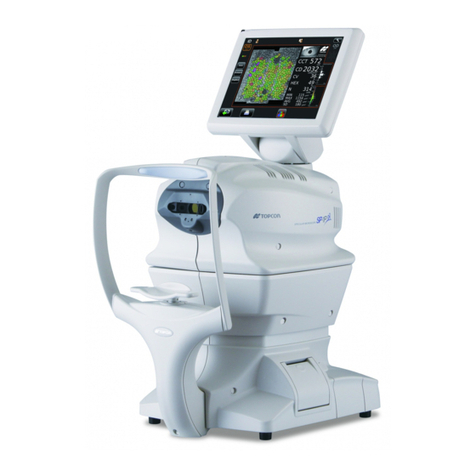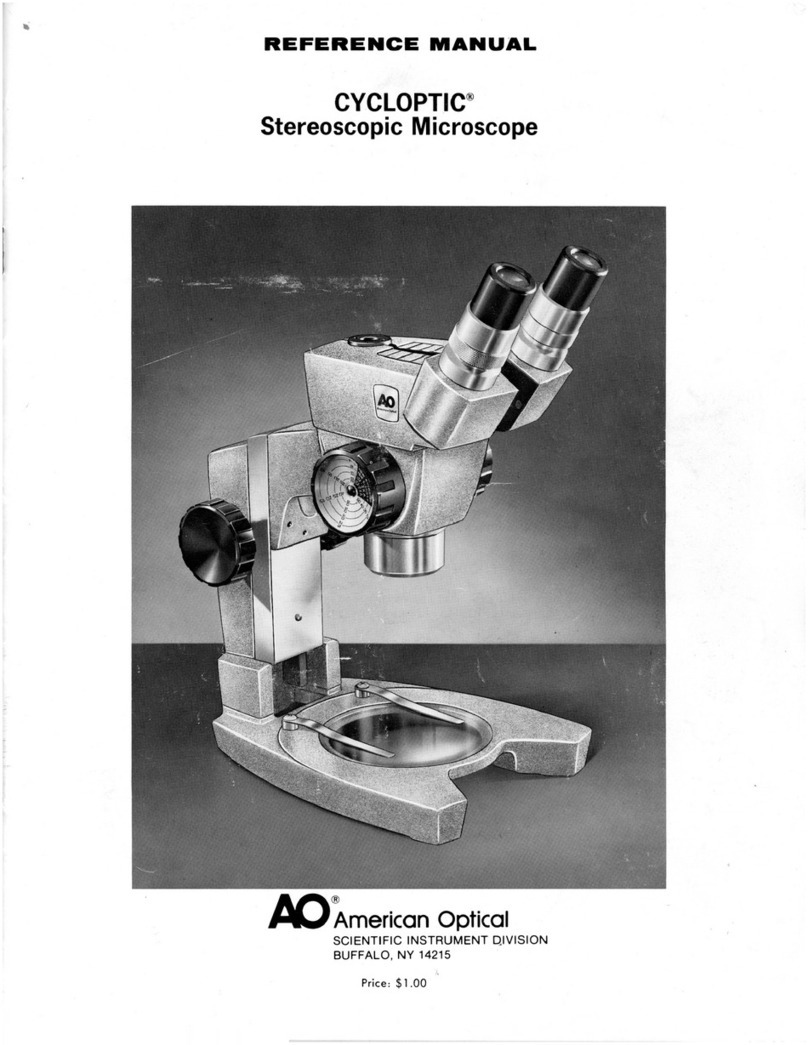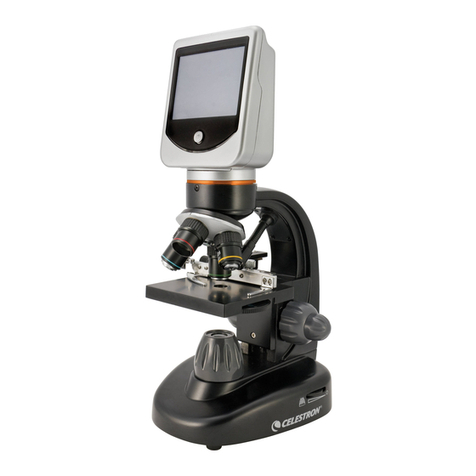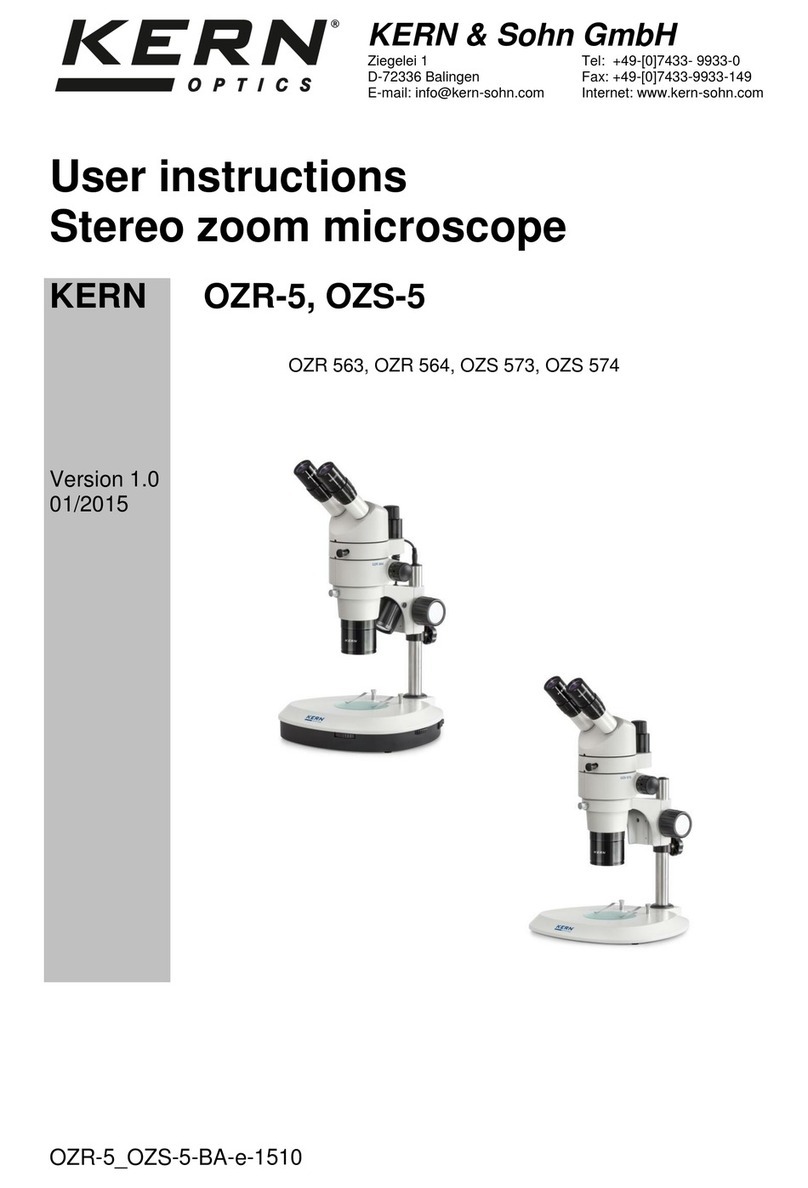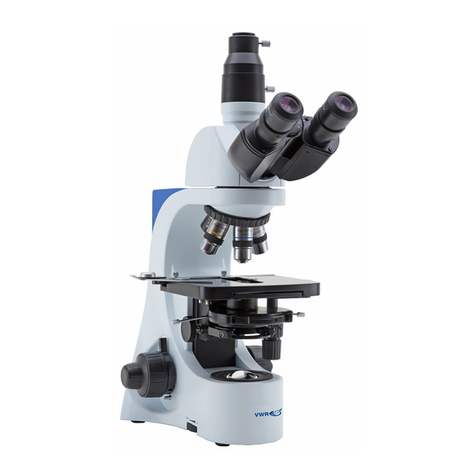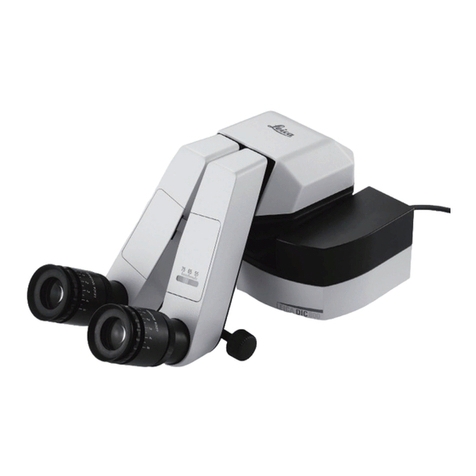
Introduction
Thank you for your purchase of a Motic microscope. Motic microscopes are precision instruments, subjected
to meticulous examination in order to reach you in perfect condition. Their design combines easy
management and optimum functioning with minimum maintenance.
The information contained in this manual is likely to go beyond what the average user needs to know to use
the microscope, however, it is provided to answer any queries that may arise.
Your new microscope combines high performance features, with an excellent degree of optical resolution
and clarity of image. It incorporates a 120mm x 110mm stage with objectives located on a ball bearing
nosepiece; a precision coarse and fine focusing system; coarse and fine focus knobs, a fixed Abbe
condenser with a numerical aperture of 0.65 N.A. and a built-in 220V/ 20W tungsten illumination.
The SFC-100FL(H) model incorporates 12V/10W halogen illumination.
These instructions should be read carefully before operating the microscope. They will permit you to use
your new microscope to its fullest capabilities. Terminology used to describe components and controls can
be found in the diagram on page 2.
These instructions are based on the assembly and use of the SFC-100FL model with additional notes
applying specifically to models SFC-100FL(H) and SFC-100FLED.
Unpacking
All components of the microscope have been carefully packed to make sure they reach you in perfect
condition. We recommend that you do not discard any packing containers in case you need to return the
microscope or store it for long periods of time; or should it become necessary to transport it to a technical
service for any repair, or maintenance procedure.
The box should contain the following components, depending on the model:
•SFC-100FL: A microscope with a monocular head, eyepiece, fixed stage, 0.65 A.N. condenser and
three objectives. A blue filter and a protective dust cover are also included.
•SFC-100FL(H): A microscope with a monocular head, eyepiece, fixed stage, 0.65 A.N. condenser
and three objectives. A blue filter and a protective dust cover are also included.
•SFC-100FLED:A microscope with a monocular head, eyepiece, fixed stage, 0.65 A.N. condenser
and three objectives. A protective dust cover is also included.
Remove and handle the microscope and all its components with extreme care.
Avoid touching the lenses of the optical elements and keep clear of contact with dust, water or other
contaminating agents, as they could stain, or damage the lens surface and affect the quality of the
image.
A. Place the microscope in an upright position on a clean flat and stable surface.
B. Remove the rest of the components from the box.
-3-

